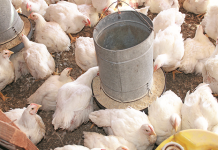Driving home to Pretoria on Rosslyn Road at the end of each day, I pass an enormous dumpsite. Invariably, there are a number of people scavenging on the heaps of rubbish, many of whom, I am sure, are looking for something to eat. A week ago, seeing this awful scene made me feel more guilty than usual about the food that I waste – food that could have fed someone else, perhaps two people!
Every month, when I buy my groceries, I tend to throw a few things out – a small quantity of leftover milk, a few stale bread crusts, some fruit which doesn’t look appetising anymore, or perhaps some leftover pap or rice. Just a few small odds and ends… Yet for someone desperately searching for scraps on a pile of trash, leftovers like these could easily provide nourishment for another day.
Massive wastage
What triggered my feelings of guilt was a presentation given by Food Bank SA’s managing director Muhamed Kajee to minister of Agriculture, Forestry and Fisheries Tina Joemat-Pettersson. According to him, no less than 20% of South African households have inadequate or severely inadequate access to food. In total, about 2,8 million households, comprising about 11 million people, are deemed food-insecure.
Despite this, over 9 million tons of food are wasted every year – in South Africa alone. And almost all of this is food from farms that did not make it to the markets due to market inefficiency and weak distribution mechanisms. A mere 4% is wasted by households. According to Tristram Stuart, author of the award-winning book, Waste: Uncovering the Global Food Scandal, Western countries waste up to half of their food.
Addressing a recent conference in London, Stuart said that as countries have grown richer, they have typically put more and more food into their shops and restaurants. The result is that today, most European and North American countries produce between 150% and 200% more than their citizens actually consume. In the US, to put it more graphically, the nation’s food manufacturers, fast-food outlets and restaurants churn out twice as much food as people need. And inevitably, according to Stuart, vast quantites of this food simply end up being thrown away.
Food security
These facts can change the way one looks at the challenges of international – and local – food security. According to statistics produced by the International Fund for Agricultural Development, there are 925 million people who go to bed hungry every night. By 2050, there will be about 9,1 billion people on earth, and it has been said that we need to double current food production to feed these numbers.
Well, you can see where I’m going, can’t you? If we could save all that wasted food, we’d be achieving those figures right now! Realistically, of course, this isn’t possible. There will always be some wastage due to inherent inefficiencies in our distribution systems. Yet if we could prevent even a third of that wastage, can you imagine the difference that would make to food security? It’s time for a radical rethink of how food is produced and distributed. If food is unmarketable, it does not mean that it is inedible.
Ask those people on that dumpsite.












